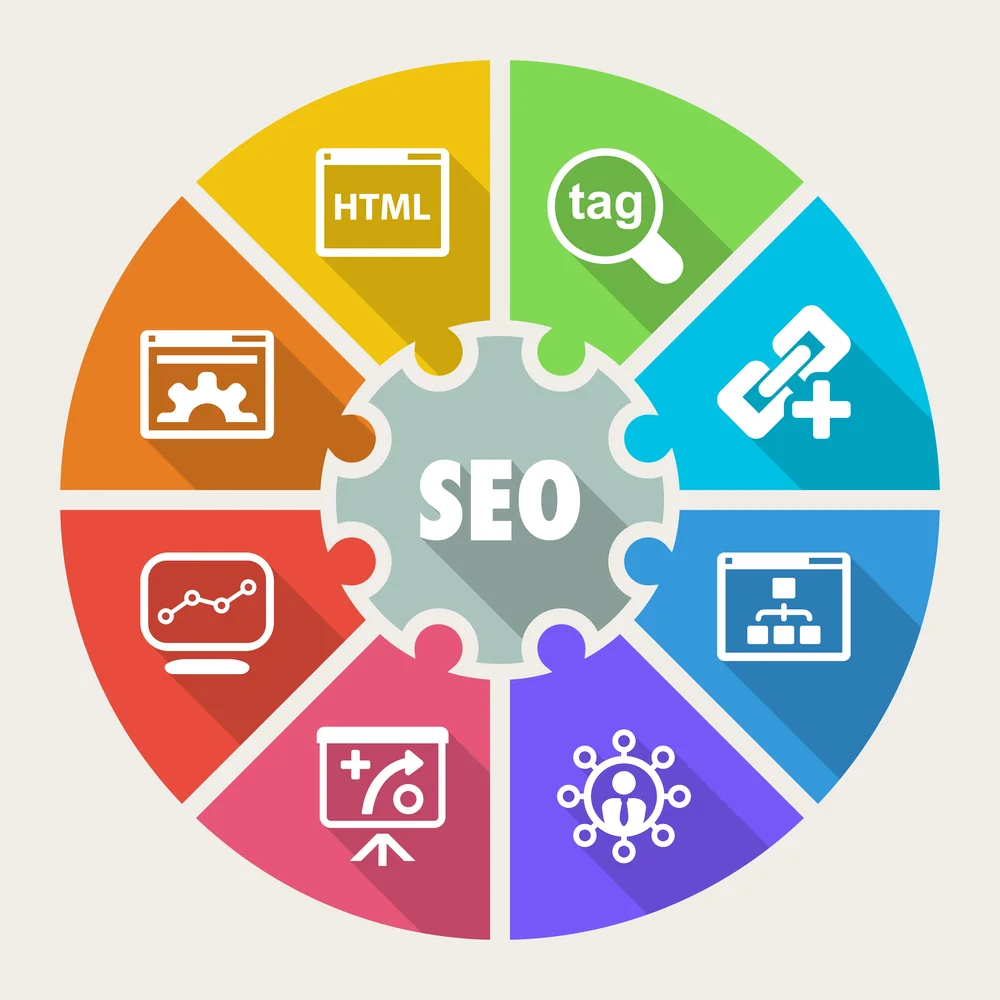Small businesses face fierce competition online. As a business owner in St. Augustine, you might already be familiar with the basics of SEO St Augustine fl. But have you truly tapped into the potential of On Page SEO to boost your website’s visibility? Understanding and applying on-page SEO techniques can make a significant difference in how your website performs, attracting more customers and helping you stay ahead of local competitors.
Let’s dive into the 7 key factors of on-page SEO and how a digital marketing agency can help your business grow by implementing these strategies.
Key On Page SEO Factors
Imagine your website as a storefront. Just like you arrange your products to attract customers, on page SEO does the same for search engines. It means improving each webpage’s elements. This helps search engines understand your content better and rank it properly.
Key on page SEO techniques include optimizing:
- Title Tags: These are the headlines search engines read first. A well-constructed title tag not only grabs attention but also tells search engines exactly what your page is about.
- Header tags (H1, H2, H3, etc.) are important. They help users understand the structure of the information. They also assist search engines in recognizing the order of the content.
- URL Structure: Short URLs with keywords are easier for users and help search engines understand your content better.
- Content Optimization: Good, keyword-focused content engages your audience and shows search engines that your website is important.
These may seem like small changes, but they work together like gears in a machine. This makes your website easier to find and navigate, which can bring in more visitors.
Best Practices for Optimization
Consistency and strategy are key to optimizing your website. Here are some best practices that can make a big impact:
- Use Descriptive and Keyword-Rich Titles: Titles should tell both the user and search engines what to expect. However, avoid keyword stuffing, as this can hurt your rankings.
- Optimize Images: Large, unoptimized images can slow your site down. Use descriptive file names and ALT tags for images to help with search engine visibility and accessibility.
- Create High-Quality Content: Search engines prioritize content that is informative, engaging, and well-structured. The more valuable your content, the more likely users are to stay on your page and share it.
These techniques, when properly implemented, can lead to measurable improvements in your website’s performance.
The Importance of Meta Tags and Descriptions
Meta tags and descriptions are like the window display of your digital storefront. They give potential customers a sneak peek at what’s inside before they even click through to your site.
Meta titles and descriptions are what appear in search results, and they play a crucial role in convincing users to click. To make the most of them:
- Meta Title: Include your primary keyword and keep it concise, ideally under 60 characters.
- Meta Description: Offer a brief yet compelling summary of the page. While meta descriptions don’t directly impact rankings, they influence click-through rates, which can indirectly affect your SEO.
By optimizing these elements, you increase the likelihood of attracting more traffic from search results.
Optimizing Content for Keywords and Relevance
Think of keywords as the signposts that guide search engines and users to your content. But it’s not just about throwing in as many keywords as possible. The real art lies in striking a balance between keyword integration and natural readability.
Here’s how to do it:
- Strategic Keyword Placement: Use your primary keyword in the title, the first paragraph, and naturally throughout the content. Include related keywords to support the main topic without overloading the page.
- Write for People, Not Just Search Engines: It’s easy to focus on algorithms. However, real people are the ones reading your content. Keeping your audience in mind ensures your content is engaging, which search engines recognize as a positive signal.
- Update and Refresh Content: As search trends evolve, so should your content. Regularly reviewing and updating your pages helps maintain their relevance and ranking potential.
Digital marketing can help you find the right balance. It makes sure your content is good for search engines and valuable to your customers.
Internal Linking Strategies for Improved SEO
Internal links are the unsung heroes of on page SEO. Just like a city’s street signs help you find your way, internal links guide users and search engines through your site.
Here’s why internal linking is crucial:
- Improves Website Navigation: By linking to related pages, you help users find what they need. This keeps visitors on your site longer and lowers bounce rates.
- Boosts Page Authority: Internal links distribute the “authority” of your high-performing pages to others, which can help improve their rankings.
- Enhances Indexing: Search engines use links to discover new content. A well-organized internal linking structure makes it easier for them to crawl your site and index more pages.
For small business owners, this might sound complex, but an experienced digital marketing agency can create an internal linking strategy that maximizes the SEO potential of your site.
Mobile-Friendly Design and Its Impact on SEO
Picture this: a potential customer in St. Augustine searches for your business on their phone. If your site isn’t optimized for mobile, they’ll likely leave in frustration—and head to a competitor’s site.
Google now uses mobile-first indexing, meaning it primarily uses the mobile version of your site for ranking and indexing. Therefore, ensuring that your site is:
- Responsive: Pages should automatically adjust to fit any screen size.
- Fast Loading: Mobile users expect speed, and a slow site can lead to high bounce rates.
- Optimized for Touch: Buttons and links should be easy to interact with on smaller screens.
Working with a digital marketing agency in St Augustine Fl that specializes in mobile optimization can improve your website for mobile users. This will create a better experience for them. It can also help you stay competitive in search rankings. This can also keep you competitive in search rankings.
The Role of User Experience (UX) in On Page SEO
User experience (UX) goes hand-in-hand with on page SEO. It’s not just about getting people to your site—it’s about keeping them there. A site that is intuitive, easy to navigate, and engaging will perform better in search rankings because it keeps users satisfied.
Good UX means:
- Clear Navigation: Users should be able to find what they need quickly and without frustration.
- Engaging Design: Visually appealing and user-friendly layouts encourage visitors to explore more pages.
- Call-to-Action: Ensure your call-to-actions (CTAs) are easy to find. They should encourage visitors to take action. This could mean making a purchase, booking an appointment, or signing up for a newsletter.
When your site’s UX is optimized, not only will users spend more time engaging with your content, but search engines will reward your site with better rankings.
Bringing It All Together
Mastering onpage SEO takes time, effort, and expertise. For small business owners in St. Augustine, working with a digital marketing agency can simplify the process.
Learning about on page SEO techniques can improve your online presence. These techniques include keyword optimization, mobile-friendly design, and internal linking. By using them, you can connect with more local customers. This will help you connect with more local customers.
10:23 Digital Marketing can help you implement these strategies, keeping your website ahead of the competition and attracting the right audience to grow your business.




1 thought on “7 key factors of On-page SEO: A Guide for Small Businesses in St. Augustine, FL”
Pingback: How To Create An Effective Family Law SEO Strategy
Comments are closed.